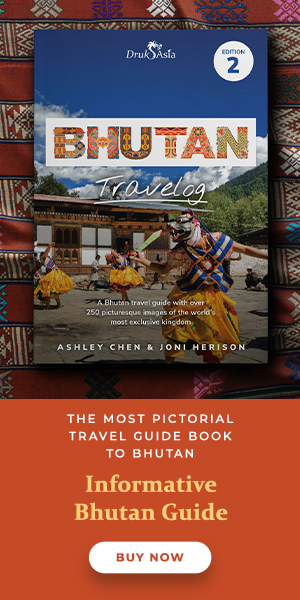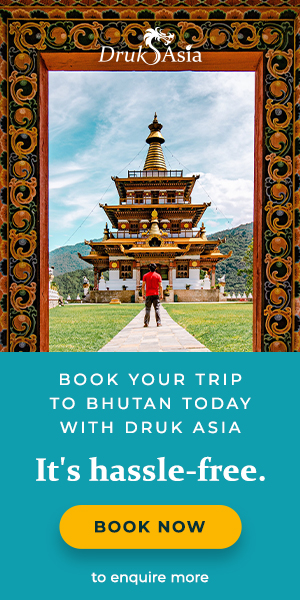What's in a Name? Discover Bhutan's Unique Naming Tradition
In Bhutan, names are traditionally given by monks and not tied to family lineage. Visitors can experience a traditional naming ceremony at sacred sites like Druk Wangditse Lhakhang in Thimphu, receiving a meaningful Buddhist name through spiritual guidance.
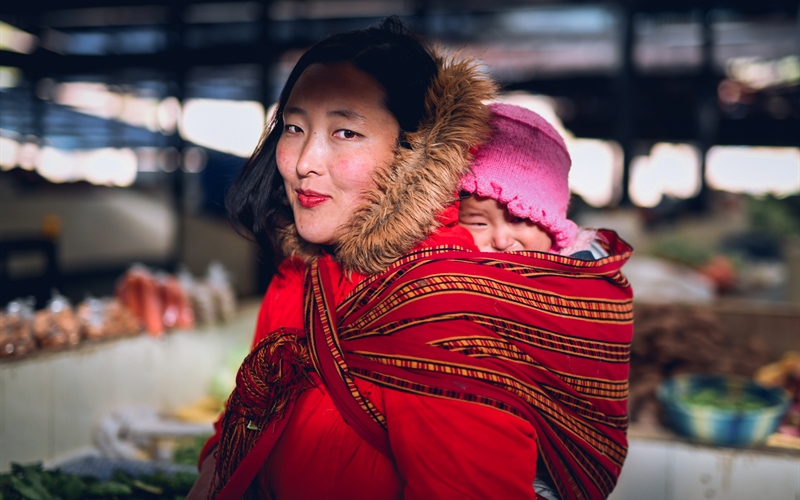
On your next visit to Bhutan don’t be surprised to meet many people with the same name- a plethora of Phuntshos, a surplus of Sangays and a ton of Tsherings. The interesting thing about Bhutanese naming culture is that there are no family names, with the exception of the Royal Family who bear the surname Wangchuck.
As family names are absent in Bhutanese society, individuals are commonly identified using their full given name. Sometimes, a person’s birthplace or a descriptive term is added to distinguish them from others who share the same name. For instance, a person named Pema from Paro might be referred to as Paro Pema. Additionally, since most Bhutanese names are unisex- you might have to clarify whether Paro Pema is a man or a woman.
Traditionally, children are not named by parents or family members. Instead, this important role is given to a lama (local monk) or Rinpoche (religious teacher) who will pick out a name best suited to the child based on religious significance, spiritual guidance, and astrological calculations.
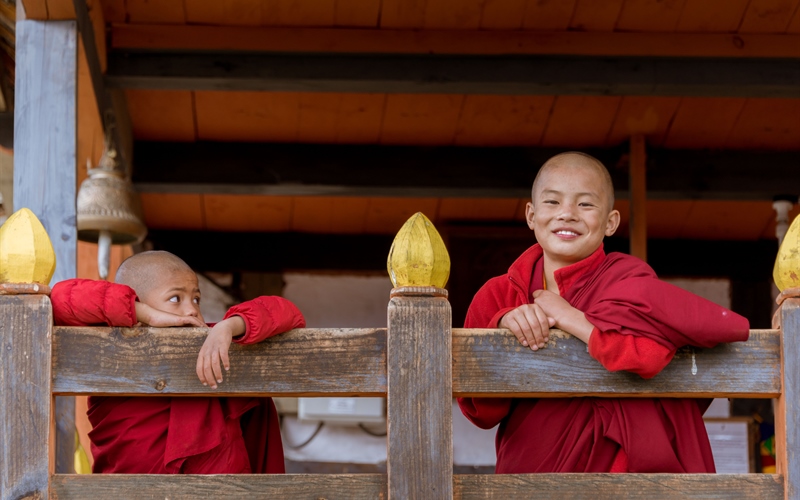
Naming Ceremony
This ceremony takes place shortly after a child's birth in a local temple or monastery where blessings are offered to the local deity to ensure their well-being. Names often have religious connotations, drawing from Buddhist principles, local deities, or historic Buddhist figures.
The monk also provides a written horoscope for the child based on the birth year of the parents, and the precise time, date and year of birth of the infant. This horoscope called a ketsi serves as a guiding document, helping families understand their child’s potential destiny and advising them on spiritual or protective measures to ward off misfortunes.
Experience a Naming Ceremony as a Visitor
Visitors to Bhutan can now take part in a naming ceremony at temples and monasteries around the country. After providing your date of birth, the lama will calculate the best Buddhist name for you. With this ceremony you could walk away as Tashi (good luck), Sonam (religious merit) or even Dorji (state of indestructibility). To arrange for a naming ceremony, visitors can consult their tour agency or local guide, who can help organize the experience.
Druk Wangditse Lhakhang: A Sacred Site for Naming Ceremonies
One of the most significant places in Thimphu where visitors can partake in a naming ceremony is the Druk Wangditse Lhakhang, also known as the Temple of the Peak of Conquest. This historic monastery, located on a forested hillside in southern Thimphu, was founded in 1715 AD as the residence of Druk Rabgye, the eighth Druk Desi.
Druk Wangditse Lhakhang is one of the oldest and most revered temples in Bhutan’s capital, holding immense historical and spiritual importance. According to Bhutanese religious texts known as namthar, which preserve the teachings of Buddha, a manifestation of Bhutan’s founder, Zhabdrung Ngawang Namgyel, consecrated this sacred site. Over the centuries, the temple also served as an administrative hub and the residential home of various influential political figures.
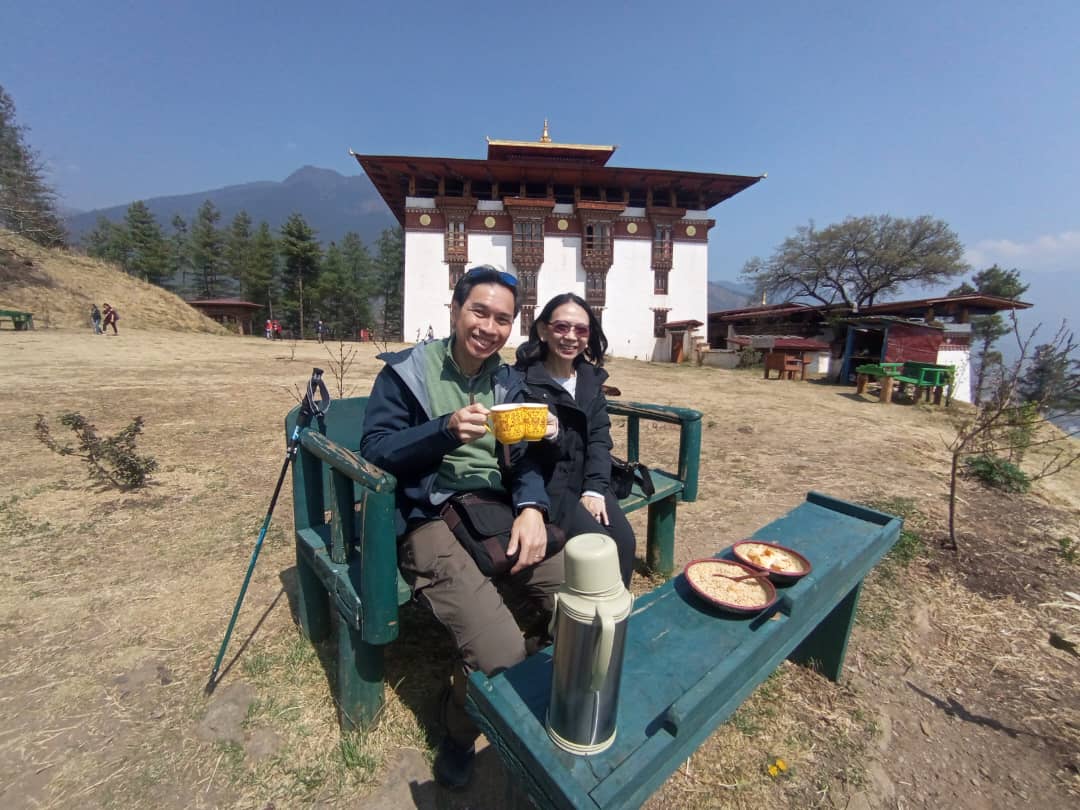
Inside the three-story temple, visitors can witness an array of sacred relics and artistic treasures. The Goenkhang, located on the top floor, houses statues of Bhutan’s protective deities. The second level features beautifully painted murals and exquisitely carved statues of deities, each with profound religious significance. Among the most revered figures enshrined here are:
- Pelden Lhamo (Mahakali) – A powerful female tantric deity associated with protection.
- Pel Yeshey Goenpo (Mahakala) – A male deity known for clearing obstacles.
- Tsheringma – A goddess of longevity, wealth, and prosperity.
How to Reach Druk Wangditse Lhakhang
Druk Wangditse Lhakhang is accessible through several scenic hiking trails. Visitors can begin their trek from Dechen Phodrang, Zilukha Nunnery, or Sangaygang (BBS Tower). Among these, the most popular route starts from Sangaygang Viewpoint, offering a gentle and picturesque 30-minute walk through lush greenery. This trail is also favored by mountain bikers due to its well-maintained paths and stunning natural scenery.
For those who enjoy trekking, the best times to visit are during spring and autumn, when the weather is pleasant, and the surrounding landscapes are at their most vibrant. The journey to the temple is not just about reaching the sacred site- it is also an opportunity to immerse yourself in Bhutan’s pristine natural beauty, with panoramic views of Thimphu Valley along the way.
Get Yourself a Bhutanese Name
For those visiting Bhutan, participating in a traditional naming ceremony not only allows you to gain insight into ancient spiritual practices but also offers a meaningful way to connect with the country’s rich cultural heritage. For those who wish to undergo this ritual in a truly historic setting, Druk Wangditse Lhakhang provides the perfect backdrop for an unforgettable spiritual journey.
Simply inform your Bhutan tour agency should you wish to participate in a naming ceremony or engage in other unique activities in Bhutan.
